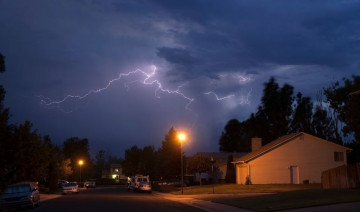{article.name}
Building Resiliency
Model building code could aid remodelers and home owners in face of extreme weather.

- Share this:
- Share on Facebook
- Pin on Pinterest
- Tweet on Twitter
Now that hurricane season is officially upon us, this is a good time for remodelers to think about upgrades to make existing houses more resilient. Updated model building codes like the International Residential Code (IRC) are useful guides for remodelers to utilize.
User-friendly provisions
The IRC is a national model building code developed by the International Code Council (ICC) to address the design and construction of one- and two-family dwellings and townhouses not more than three stories above grade. It provides a user-friendly set of provisions that protect homeowners and tenants while preserving housing affordability.
UPGRADES AND UPDATES CAN SERVE A DUAL PURPOSE. FOR EXAMPLE, WINDOWS THAT ARE MORE RESILIENT TO EXTREME WEATHER ALSO TEND TO BE MORE ENERGY EFFICIENT.
When adopted at the state or local level, the IRC requires all new single-family homes, duplexes and townhouses, to be able to withstand certain levels of damage, like that which can be incurred through exposure to high winds and heavy rainfall. Additions, significant alterations and repairs to existing homes also need to comply with the provisions outlined in the code. Further, the IRC specifically requires homes close to the Atlantic Ocean or Gulf of Mexico be constructed to resist hurricane winds and coastal flooding.
Protection against severe weather
A 2018 Texas A&M study, commissioned by the National Association of Home Builders, found that newer homes, built to more recent versions of the IRC, performed better during severe weather events than older homes. Homes built within the past twenty years, and to more recent code versions, saw significantly less damage to wall and roof coverings as well as less window breakage.
For remodelers in areas that experience high winds from events like hurricanes or severe thunderstorms, there is evidence that retrofitting homes to the latest version of the IRC could keep more families safe.
Many of these upgrades can serve a dual purpose. For example, windows that are more resilient to extreme weather also tend to be more energy efficient. In the past year, as many homeowners have engaged in remodeling projects, they have expressed interest in upgrading their homes to be more “green.” This is an opportunity for remodelers to capitalize on this market trend.
For more information on the NAHB hurricane resilience study, visit NAHB.org and search “Damage Assessment from Hurricanes Harvey and Irma.” And to access the full suite of NAHB’s information on resilient construction, search “Building Resilience” on NAHB’s website.
Sign up for our Email List
Stay updated with all our latest posts, products and offers! Just enter your information below.

Comments